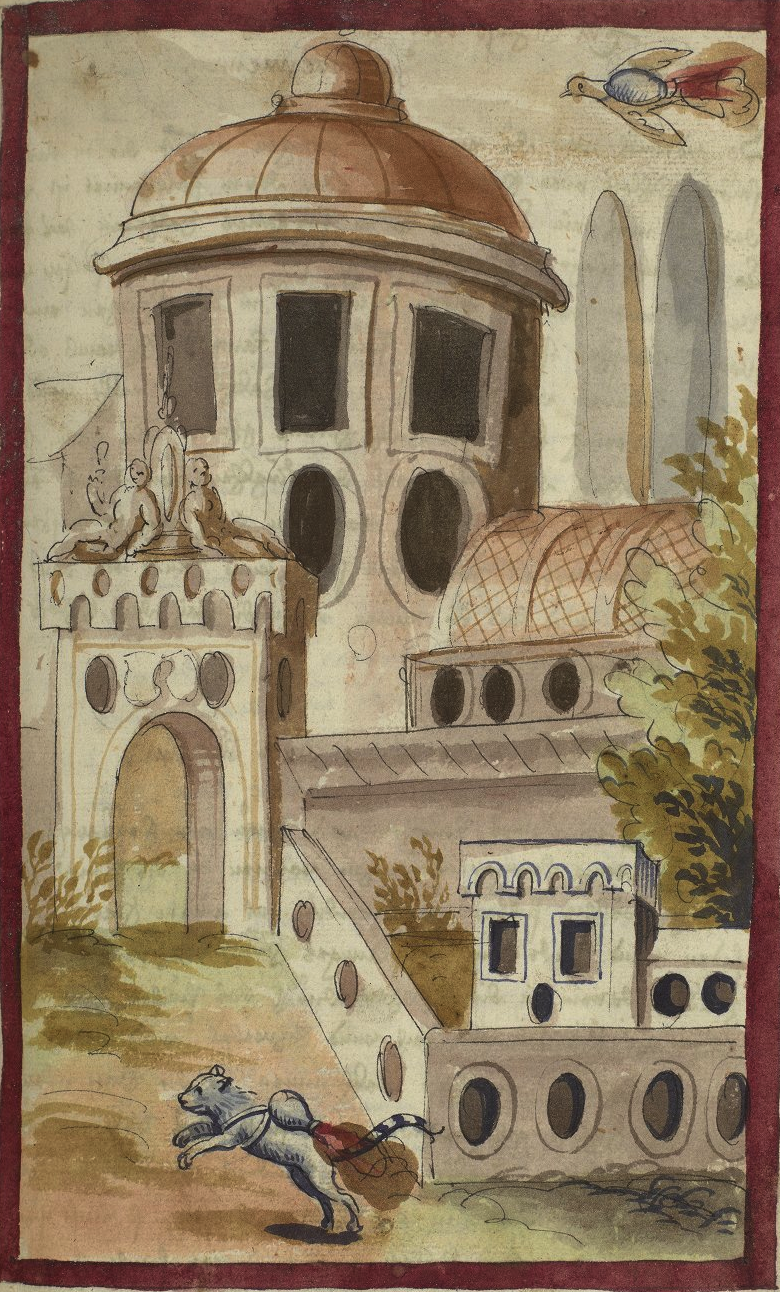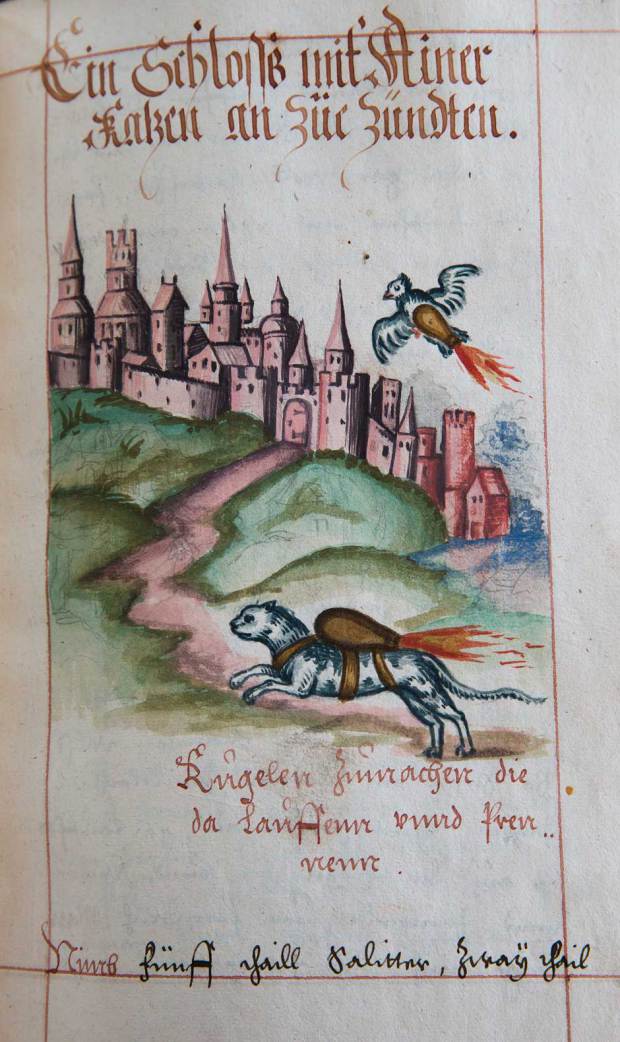Paw prints and feline urine stains on a medieval scribe’s manuscript, perhaps they weren’t entirely out of the ordinary in the 15th century. But cats strapped to mini-powder kegs, bounding off to burn down a town — now that’s pretty unusual.
The incendiary feline featured above (and elsewhere on this page) comes from a digitized version of an early 16th century military manual written by Franz Helm. An artillery master, Helm wrote about a broad and imaginative set of destructive ideas for siege warfare. Although my German is somewhat rusty, I got the sense that he was awfully fond of exploding sacks, barrels, and various other receptacles, and eventually decided to combine these ideas with an unwitting animal delivery system. These animals, according to Helm’s guide, would allow a commander to “set fire to a castle or city which you can’t get at otherwise.”
The text was originally digitized by the University of Pennsylvania, and a UPenn historian named Mitch Fraas decided to take a closer look at this strange exploding cat business. According to Fraas, the accompanying text reads:
“Create a small sack like a fire-arrow … if you would like to get at a town or castle, seek to obtain a cat from that place. And bind the sack to the back of the cat, ignite it, let it glow well and thereafter let the cat go, so it runs to the nearest castle or town, and out of fear it thinks to hide itself where it ends up in barn hay or straw it will be ignited.”
That’s the military strategy in a nutshell. Seems like a great idea, apart from the fact that cats are notoriously unpredictable. In any case, it’s Friday, so here are more illustrations of weaponized cats to round out your work week.
For more of Helm’s work, head on over to Penn in Hand: Selected Manuscripts.
via National Post
Ilia Blinderman is a Montreal-based culture and science writer. Follow him at @iliablinderman, or read more of his writing at the Huffington Post.
Related Content:
How to Potty Train Your Cat: A Handy Manual by Charles Mingus
Humans Fall for Optical Illusions, But Do Cats?
Thomas Edison’s Boxing Cats (1894), or Where the LOLCats All Began





Misleading headline, as the cats weren’t presumed to fly through the air, per the illustration and the text (“runs to the nearest castle or town”). Nor are they “jet packs.” As far as military strategy, Samson did something similar well before the 16th Century. See Judges 15:4–5.
By changing a single letter, we can go from a medieval fantasy cat bomb to an actual U.S. World War II weapon program, the bat bomb. See . Same basic idea.
That last comment was supposed to include a line to the Wikipedia “Bat bomb” page. I also note birds with “jet packs” in the pictures above. Even more similar to the U.S. bat bombs.
Fascinating story, but the image labelled “fig z” is not in the referenced document. I’ve downloaded two versions of the Helm book scans and gone through each page by page. The black/white drawing is a different style, and is obviously cropped from a large image. In some other examples the bottom of a horse’s feet can be seen above the cat. Can anyone shed light on the source of this cropped image? I want to see the horse version of the jet-pack …